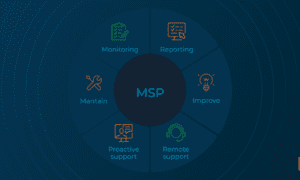In a globalized digital economy, businesses are under constant pressure to innovate faster while keeping costs under control. That’s where offshore software development comes into play. This model—where companies delegate software projects to external teams in other countries—has rapidly gained traction.
In fact, the global IT outsourcing market is projected to reach $682.3 billion by 2027, according to Statista. The trend is clear: more businesses are exploring offshore development services to stay competitive, agile, and scalable.
But is it the right fit for every business? While the benefits of cost savings and access to international expertise are tempting, offshore software development also comes with its own set of risks. This article explores the major advantages of offshore software development—along with the challenges—and offers insights into how businesses can maximize results while avoiding common pitfalls.
Understanding Offshore Software Development
Offshore software development is a model where a company hires a third-party software development provider located in a different country. The primary motivations for doing so typically include reducing operational expenses, gaining access to specialized skills not available locally, and speeding up project delivery timelines.
These offshore software development services are most commonly based in regions like Eastern Europe, Latin America, and Southeast Asia—locations known for their strong technical expertise and competitive pricing. Companies often turn to offshore partners for everything from mobile app development and enterprise software to system integration and cloud migration.
The model has become especially popular among startups, mid-sized firms, and enterprises looking for flexible development solutions without expanding their internal teams.
The Pros of Offshore Software Development
1. Cost Savings and Increased Efficiency
One of the biggest drivers of offshore development is cost efficiency. Offshore teams generally operate in regions with lower labor costs, allowing companies to reduce overall development expenses significantly. This doesn’t mean sacrificing quality—it means reallocating resources in a smarter way.
Beyond direct salary savings, companies also cut back on overhead costs like office space, equipment, and employee benefits. These financial advantages can be especially impactful for startups or small businesses working with limited budgets.
2. Access to a Global Talent Pool
By going offshore, businesses open the door to a much wider talent pool than what’s available locally. Whether it’s niche technology expertise or additional engineering bandwidth, offshore teams can bring in specialized skills that might be hard—or expensive—to find domestically.
This global access also helps businesses stay ahead of the innovation curve. Offshore providers often work across a range of industries and technologies, making them well-equipped to implement the latest frameworks, architectures, and tools.
3. Flexibility and Scalability
Offshore development services offer tremendous flexibility. Companies can scale teams up or down quickly based on project requirements, reducing the risk of overhiring or underutilizing talent.
This on-demand approach is especially valuable for projects with changing scopes, seasonal development needs, or fast-moving product roadmaps. Offshore partners often provide multiple engagement models—such as dedicated teams or time-and-material contracts—that can adapt to evolving business needs.
4. 24/7 Development Cycles
When teams are distributed across time zones, it’s possible to achieve round-the-clock development. While the main office sleeps, offshore developers continue the work. This time zone offset can drastically shorten product development cycles and accelerate delivery timelines.
For companies operating in fast-paced industries or racing to meet a launch deadline, this “follow-the-sun” model can be a major advantage—if managed correctly.
The Cons of Offshore Software Development
While the benefits are clear, offshore development isn’t without its challenges. Understanding these risks upfront is key to managing them effectively.
1. Communication Barriers and Time Zone Differences
Working with teams in different countries can introduce communication challenges. Language barriers, differences in business etiquette, and the lack of face-to-face interaction can slow down collaboration.
Time zone differences, while beneficial for 24/7 development, can also make real-time communication difficult. Misaligned schedules may delay feedback, complicate daily stand-ups, and limit overlapping work hours.
2. Quality Control and Accountability
Ensuring quality from afar can be difficult, especially when expectations aren’t clearly documented or understood. Differences in development standards, testing practices, or documentation processes can lead to inconsistent results.
Without direct oversight, businesses may also struggle to keep developers accountable. If a partner lacks transparency or fails to deliver on milestones, projects can easily veer off course.
3. Security Risks and Data Protection Concerns
When outsourcing development, sensitive information and intellectual property are often shared across borders. This introduces concerns around cybersecurity, regulatory compliance, and data privacy.
Different countries have varying levels of data protection laws, and enforcement can be inconsistent. Without robust security protocols in place, businesses may be exposed to legal liabilities or data breaches.
4. Cultural and Legal Differences
Cultural misunderstandings—such as differences in work ethics, hierarchy, or communication styles—can affect team dynamics. What might be considered proactive in one culture could come across as overstepping in another.
Legal differences also matter. Contract enforcement, IP rights, and labor laws vary widely from one jurisdiction to another. If issues arise, resolving them across borders can be costly and time-consuming.
5. Limited Control Over the Development Process
Outsourcing means relinquishing a certain level of control. From choosing the tools used to managing team workflows, offshore development sometimes limits a company’s ability to influence daily operations.
This lack of direct involvement can be frustrating, especially when project timelines slip or quality doesn’t meet expectations. Without close collaboration and regular checkpoints, visibility into progress can be limited.
Best Practices for Overcoming Offshore Development Challenges
Despite the risks, many businesses find offshore development to be highly effective—when managed correctly. Here are some best practices to make the most of your offshore partnership:
- Define clear goals and KPIs. Outline expectations, deliverables, and success metrics early to ensure alignment.
- Choose the right engagement model. Whether fixed-price or dedicated teams, pick the structure that best matches your project needs.
- Establish strong communication routines. Use daily stand-ups, shared dashboards, and project management tools to maintain alignment.
- Invest in onboarding and documentation. Detailed technical documentation and proper onboarding reduce misunderstandings.
- Prioritize security. Ensure that NDAs, data encryption protocols, and compliance checks are in place from the beginning.
- Start with a pilot project. Before committing to a large contract, test the waters with a smaller project to evaluate performance and collaboration.
Building a strong partnership requires more than just signing a contract. It’s about setting the stage for transparent communication, mutual accountability, and shared success.
Weighing the Pros and Cons of Offshore Software Development
Offshore software development services offer powerful advantages—cost efficiency, global expertise, faster timelines—but they also come with notable risks. Communication issues, cultural gaps, and reduced control can undermine even the most promising projects if not proactively addressed.
The decision to go offshore should be strategic. Businesses need to weigh their priorities: Are you looking to build something fast on a tight budget? Do you need niche tech skills that aren’t available locally? Are you prepared to manage remote teams effectively?
When the right partner is chosen, and the relationship is carefully managed, offshore development services can become a key driver of innovation and growth. But success depends on more than price—it depends on preparation, process, and trust.
For businesses ready to expand their technical capabilities while staying lean and competitive, offshore development may just be the edge they need.



































